196 results found for 'Science'. Prev |1|2|3|4|5|6|7|8 | Next | View 100 per page
Low relevance matches: 10 other results may be of interest to you. Show low relevance matches
DNA - The transmission of heritable characteristics from one generation to the next involves DNA and genes ACSSU185 Year 10 Biological Sciences
Evolution - The theory of evolution by natural selection explains the diversity of living things and is supported by a range of scientific evidence ACSSU004 Foundation Earth and Space Sciences
Weather and Climate - Daily and seasonal changes in our environment, including the weather, affect everyday life ACSSU002 Foundation Biological Sciences
Living Things - Living things have basic needs, including food and water ACSSU005 Foundation Physical Sciences
Forces and Moving - The way objects move depends on a variety of factors including their size and shape ACSSU017 Year 1 Biological Sciences
Living Things - Living things have a variety of external features ACSSU019 Year 1 Earth and Space Sciences
Weather and Climate - Observable changes occur in the sky and landscape ACSSU020 Year 1 Physical Sciences
Light and Sound - Light and sound are produced by a range of sources and can be sensed ACSSU030 Year 2 Biological Sciences
Life Cycles - Living things grow, change and have offspring similar to themselves ACSSU031 Year 2 Chemical Sciences
Materials - Different materials can be combined, including by mixing, for a particular purpose ACSSU032 Year 2 Earth and Space Sciences
Water - Earth’s resources, including water, are used in a variety of ways ACSSU033 Year 2 Physical Sciences
Forces and Moving - A push or a pull affects how an object moves or changes shape ACSSU043 Year 5 Biological Sciences
Adaptations - Living things have structural features and adaptations that help them to survive in their environment ACSSU044 Year 3 Biological Sciences
Living Things - Living things can be grouped on the basis of observable features and can be distinguished from nonliving ACSSU046 Year 3 Chemical Sciences
Solids Liquids Gases - A change of state between solid and liquid can be caused by adding or removing heat ACSSU048 Year 3 Earth and Space Sciences
Earth Moon Sun - Earth’s rotation on its axis causes regular changes, including night and day ACSSU049 Year 3 Physical Sciences
Heat - Heat can be produced in many ways and can move from one object to another ACSSU072 Year 4 Physical Sciences
Life Cycles - Living things have life cycles ACSSU073 Year 4 Biological Sciences
Animal Survival - Living things, including plants and animals, depend on each other and the environment to survive ACSSU074 Year 4 Chemical Sciences
Materials - Natural and processed materials have a range of physical properties; These properties can influence their use ACSSU075 Year 4 Earth and Space Sciences
Earth Changes - Sudden geological changes or extreme weather conditions can affect Earth’s surface ACSSU076 Year 4 Physical Sciences
Forces and Moving - Forces can be exerted by one object on another through direct contact or from a distance ACSSU077 Year 5 Chemical Sciences
Solids Liquids Gases - Solids, liquids and gases have different observable properties and behave in different ways ACSSU078 Year 5 Earth and Space Sciences
Earth Moon Sun - The Earth is part of a system of planets orbiting around a star (the sun) ACSSU080 Year 5 Physical Sciences
Light and Sound - Light from a source forms shadows and can be absorbed, reflected and refracted ACSSU094 Year 6 Biological Sciences
Adaptations - The growth and survival of living things are affected by the physical conditions of their environment ACSSU095 Year 6 Chemical Sciences
Chemical Changes - Changes to materials can be reversible, such as melting, freezing, evaporating; or irreversible, such as burning and rusting ACSSU096 Year 6 Earth and Space Sciences
Earth Changes - Sudden geological changes or extreme weather conditions can affect Earth’s surface ACSSU097 Year 6 Physical Sciences
Electrical Circuits - Electrical energy can be transferred and transformed in electrical circuits and can be generated from a range of sources ACSSU111 Year 7 Biological Sciences
Classification - Classification helps organise the diverse group of organisms ACSSU112 Year 7 Biological Sciences
Food webs - Interactions between organisms, including the effects of human activities can be represented by food chains and food webs ACSSU113 Year 7 Chemical Sciences
Separating Mixtures - Mixtures, including solutions, contain a combination of pure substances that can be separated using a range of techniques ACSSU115 Year 7 Earth and Space Sciences
Earth Moon Sun - Predictable phenomena on Earth, including seasons and eclipses, are caused by the relative positions of the sun, Earth and the moon ACSSU116 Year 7 Earth and Space Sciences
Earth Resources - Some of Earth’s resources are renewable, but others are non renewable ACSSU117 Year 7 Physical Sciences
Forces and Machines - Change to an object’s motion is caused by unbalanced forces, including Earth’s gravitational attraction, acting on the object ACSSU149 Year 8 Biological Sciences
Cells - Cells are the basic units of living things and have specialised structures and functions ACSSU150 Year 8 Biological Sciences
Organ Systems - Multi-cellular organisms contain systems of organs that carry out specialised functions that enable them to survive and reproduce ACSSU151 Year 8 Chemical Sciences
Matter and Particles - The properties of the different states of matter can be explained in terms of the motion and arrangement of particles ACSSU152 Year 8 Chemical Sciences
Matter and Particles - Differences between elements, compounds and mixtures can be described at a particle level ACSSU153 Year 8 Earth and Space Sciences
Rocks and Minerals - Sedimentary, igneous and metamorphic rocks contain minerals and are formed by processes that occur within Earth over a variety of timescales ACSSU155 Year 8 Physical Sciences
Energy Forms - Energy appears in different forms, including movement (kinetic energy), heat and potential energy, and energy transformations and transfers cause change within systems ACSSU175 Year 9 Biological Sciences
Organ Systems - Multi-cellular organisms rely on coordinated and interdependent internal systems to respond to changes to their environment ACSSU176 Year 9 Biological Sciences
Ecology - Ecosystems consist of communities of interdependent organisms and abiotic components of the environment; matter and energy flow through these systems ACSSU177 Year 9 Chemical Sciences
Atomic Models - All matter is made of atoms which are composed of protons, neutrons and electrons; natural radioactivity arises from the decay of nuclei in atoms ACSSU178 Year 9 Chemical Sciences
Chemical Reactions - Chemical reactions involve rearranging atoms to form new substances; during a chemical reaction mass is not created or destroyed ACSSU179 Year 9 Chemical Sciences
Chemical Reactions - Chemical reactions, including combustion and the reactions of acids, are important in both non-living and living systems and involve energy transfer ACSSU225 Year 8 Chemical Sciences
Chemical Reactions - Chemical change involves substances reacting to form new substances ACSSU180 Year 9 Earth and Space Sciences
Plate Tectonics - The theory of plate tectonics explains global patterns of geological activity and continental movement ACSSU182 Year 9 Physical Sciences
Energy Transfer - Energy transfer through different mediums can be explained using wave and particle models ACSSU186 Year 10 Chemical Sciences
Periodic table - The atomic structure and properties of elements are used to organise them in the Periodic Table ACSSU187 Year 10 Chemical Sciences
Chemical Reactions - Different types of chemical reactions are used to produce a range of products and can occur at different rates ACSSU188 Year 10 Earth and Space Sciences
Universe - The universe contains features including galaxies, stars and solar systems and the Big Bang theory can be used to explain the origin the universe ACSSU189 Year 10 Earth and Space Sciences
Global Systems - Global systems, including the carbon cycle, rely on interactions involving the biosphere, lithosphere, hydrosphere and atmosphere ACSSU190 Year 10 Physical Sciences
Energy Conservation - Energy conservation in a system can be explained by describing energy transfers and transformations ACSSU211 Year 1 Biological Sciences
Animal Survival - Living things live in different places where their needs are met ACSSU219 Year 6 Physical Sciences
Alternative Energies - Energy from a variety of sources can be used to generate electricity ACSSU229 Year 10 Physical Sciences
Forces and Motion - The motion of objects can be described and predicted using the laws of physics


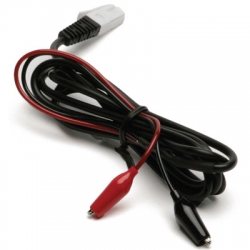







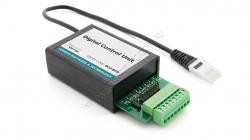





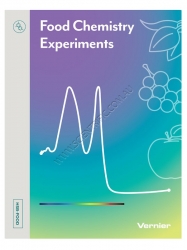

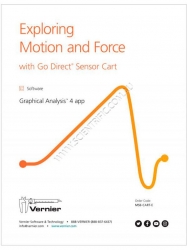
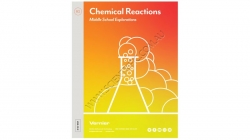





196 results found for 'Science'. Prev |1|2|3|4|5|6|7|8 | Next | View 100 per page
Low relevance matches: 10 other results may be of interest to you. Show low relevance matches
Curriculum resources related to 'Science'
ACSSU184 Year 10 Biological SciencesDNA - The transmission of heritable characteristics from one generation to the next involves DNA and genes ACSSU185 Year 10 Biological Sciences
Evolution - The theory of evolution by natural selection explains the diversity of living things and is supported by a range of scientific evidence ACSSU004 Foundation Earth and Space Sciences
Weather and Climate - Daily and seasonal changes in our environment, including the weather, affect everyday life ACSSU002 Foundation Biological Sciences
Living Things - Living things have basic needs, including food and water ACSSU005 Foundation Physical Sciences
Forces and Moving - The way objects move depends on a variety of factors including their size and shape ACSSU017 Year 1 Biological Sciences
Living Things - Living things have a variety of external features ACSSU019 Year 1 Earth and Space Sciences
Weather and Climate - Observable changes occur in the sky and landscape ACSSU020 Year 1 Physical Sciences
Light and Sound - Light and sound are produced by a range of sources and can be sensed ACSSU030 Year 2 Biological Sciences
Life Cycles - Living things grow, change and have offspring similar to themselves ACSSU031 Year 2 Chemical Sciences
Materials - Different materials can be combined, including by mixing, for a particular purpose ACSSU032 Year 2 Earth and Space Sciences
Water - Earth’s resources, including water, are used in a variety of ways ACSSU033 Year 2 Physical Sciences
Forces and Moving - A push or a pull affects how an object moves or changes shape ACSSU043 Year 5 Biological Sciences
Adaptations - Living things have structural features and adaptations that help them to survive in their environment ACSSU044 Year 3 Biological Sciences
Living Things - Living things can be grouped on the basis of observable features and can be distinguished from nonliving ACSSU046 Year 3 Chemical Sciences
Solids Liquids Gases - A change of state between solid and liquid can be caused by adding or removing heat ACSSU048 Year 3 Earth and Space Sciences
Earth Moon Sun - Earth’s rotation on its axis causes regular changes, including night and day ACSSU049 Year 3 Physical Sciences
Heat - Heat can be produced in many ways and can move from one object to another ACSSU072 Year 4 Physical Sciences
Life Cycles - Living things have life cycles ACSSU073 Year 4 Biological Sciences
Animal Survival - Living things, including plants and animals, depend on each other and the environment to survive ACSSU074 Year 4 Chemical Sciences
Materials - Natural and processed materials have a range of physical properties; These properties can influence their use ACSSU075 Year 4 Earth and Space Sciences
Earth Changes - Sudden geological changes or extreme weather conditions can affect Earth’s surface ACSSU076 Year 4 Physical Sciences
Forces and Moving - Forces can be exerted by one object on another through direct contact or from a distance ACSSU077 Year 5 Chemical Sciences
Solids Liquids Gases - Solids, liquids and gases have different observable properties and behave in different ways ACSSU078 Year 5 Earth and Space Sciences
Earth Moon Sun - The Earth is part of a system of planets orbiting around a star (the sun) ACSSU080 Year 5 Physical Sciences
Light and Sound - Light from a source forms shadows and can be absorbed, reflected and refracted ACSSU094 Year 6 Biological Sciences
Adaptations - The growth and survival of living things are affected by the physical conditions of their environment ACSSU095 Year 6 Chemical Sciences
Chemical Changes - Changes to materials can be reversible, such as melting, freezing, evaporating; or irreversible, such as burning and rusting ACSSU096 Year 6 Earth and Space Sciences
Earth Changes - Sudden geological changes or extreme weather conditions can affect Earth’s surface ACSSU097 Year 6 Physical Sciences
Electrical Circuits - Electrical energy can be transferred and transformed in electrical circuits and can be generated from a range of sources ACSSU111 Year 7 Biological Sciences
Classification - Classification helps organise the diverse group of organisms ACSSU112 Year 7 Biological Sciences
Food webs - Interactions between organisms, including the effects of human activities can be represented by food chains and food webs ACSSU113 Year 7 Chemical Sciences
Separating Mixtures - Mixtures, including solutions, contain a combination of pure substances that can be separated using a range of techniques ACSSU115 Year 7 Earth and Space Sciences
Earth Moon Sun - Predictable phenomena on Earth, including seasons and eclipses, are caused by the relative positions of the sun, Earth and the moon ACSSU116 Year 7 Earth and Space Sciences
Earth Resources - Some of Earth’s resources are renewable, but others are non renewable ACSSU117 Year 7 Physical Sciences
Forces and Machines - Change to an object’s motion is caused by unbalanced forces, including Earth’s gravitational attraction, acting on the object ACSSU149 Year 8 Biological Sciences
Cells - Cells are the basic units of living things and have specialised structures and functions ACSSU150 Year 8 Biological Sciences
Organ Systems - Multi-cellular organisms contain systems of organs that carry out specialised functions that enable them to survive and reproduce ACSSU151 Year 8 Chemical Sciences
Matter and Particles - The properties of the different states of matter can be explained in terms of the motion and arrangement of particles ACSSU152 Year 8 Chemical Sciences
Matter and Particles - Differences between elements, compounds and mixtures can be described at a particle level ACSSU153 Year 8 Earth and Space Sciences
Rocks and Minerals - Sedimentary, igneous and metamorphic rocks contain minerals and are formed by processes that occur within Earth over a variety of timescales ACSSU155 Year 8 Physical Sciences
Energy Forms - Energy appears in different forms, including movement (kinetic energy), heat and potential energy, and energy transformations and transfers cause change within systems ACSSU175 Year 9 Biological Sciences
Organ Systems - Multi-cellular organisms rely on coordinated and interdependent internal systems to respond to changes to their environment ACSSU176 Year 9 Biological Sciences
Ecology - Ecosystems consist of communities of interdependent organisms and abiotic components of the environment; matter and energy flow through these systems ACSSU177 Year 9 Chemical Sciences
Atomic Models - All matter is made of atoms which are composed of protons, neutrons and electrons; natural radioactivity arises from the decay of nuclei in atoms ACSSU178 Year 9 Chemical Sciences
Chemical Reactions - Chemical reactions involve rearranging atoms to form new substances; during a chemical reaction mass is not created or destroyed ACSSU179 Year 9 Chemical Sciences
Chemical Reactions - Chemical reactions, including combustion and the reactions of acids, are important in both non-living and living systems and involve energy transfer ACSSU225 Year 8 Chemical Sciences
Chemical Reactions - Chemical change involves substances reacting to form new substances ACSSU180 Year 9 Earth and Space Sciences
Plate Tectonics - The theory of plate tectonics explains global patterns of geological activity and continental movement ACSSU182 Year 9 Physical Sciences
Energy Transfer - Energy transfer through different mediums can be explained using wave and particle models ACSSU186 Year 10 Chemical Sciences
Periodic table - The atomic structure and properties of elements are used to organise them in the Periodic Table ACSSU187 Year 10 Chemical Sciences
Chemical Reactions - Different types of chemical reactions are used to produce a range of products and can occur at different rates ACSSU188 Year 10 Earth and Space Sciences
Universe - The universe contains features including galaxies, stars and solar systems and the Big Bang theory can be used to explain the origin the universe ACSSU189 Year 10 Earth and Space Sciences
Global Systems - Global systems, including the carbon cycle, rely on interactions involving the biosphere, lithosphere, hydrosphere and atmosphere ACSSU190 Year 10 Physical Sciences
Energy Conservation - Energy conservation in a system can be explained by describing energy transfers and transformations ACSSU211 Year 1 Biological Sciences
Animal Survival - Living things live in different places where their needs are met ACSSU219 Year 6 Physical Sciences
Alternative Energies - Energy from a variety of sources can be used to generate electricity ACSSU229 Year 10 Physical Sciences
Forces and Motion - The motion of objects can be described and predicted using the laws of physics
Products related to 'Science'

Vernier Photogate
VERNIER PHOTOGATE
The Vernier photogate is used for speed and acceleration measurements of objects passing through the gate. The object blocks an infrared beam as it passes. Motion data can be determined in software from the timing of beam blocking.
This general-purpos...
Order code: VPG-BTD



Vernier Turbidity Sensor
VERNIER TURBIDITY SENSOR
Vernier's Turbidity Sensor can be used in Chemistry, Biology, Water Quality, Physical Science and Earth Science studies to measure the turbidity of freshwater or seawater samples. Its small, sleek design and simple set up make it easy to use at th...
Order code: TRB-BTA



Vernier Voltage Probe
VERNIER VOLTAGE PROBE
Vernier's Voltage Probe is a bipolar sensor that measures direct voltage. The black lead is grounded along with the interface and the sensor reports the potential difference between the red lead and ground. It can be used just like a standard volt me...
Order code: VP-BTA



Vernier Go Direct Climate and Meteorology Experiments Package
VERNIER GO DIRECT CLIMATE AND METEOROLOGY EXPERIMENTS PACKAGE
Explore weather, climate and other important weather related topics with your Year 4-8 Middle School students. Collect, share and analyze sensor data with Vernier's free Graphical Analysis software. The GA app ...
Order code: GDP-CM

Vernier Go Direct Investigating Solar Energy Package
VERNIER GO DIRECT INVESTIGATING SOLAR ENERGY PACKAGE
Examine renewable energy, solar power and engineering design with your Years 2-6 students. Collect, share and analyze sensor data with Vernier's free Graphical Analysis software. The GA app facilitates student understan...
Order code: GDP-EL-SE

Vernier Go Direct Investigating Wind Energy Package
VERNIER GO DIRECT INVESTIGATING WIND ENERGY PACKAGE
Examine renewable energy, wind power and engineering design with your Years 2-6 students. Collect, share and analyze sensor data with Vernier's free Graphical Analysis software. The GA app facilitates student understandi...
Order code: GDP-EL-WE

Vernier Exploring Motion and Force with Go Direct Sensor Cart Package
VERNIER GO DIRECT EXPLORING MOTION AND FORCE WITH SENSOR CARTS PACKAGE
Explore the force of friction, aspects of motion and simple machines such as the lever, ramp and pulley, all using Vernier's Go Direct Sensor Cart and materials typically found in your Years 6-9 Middle...
Order code: GDP-MS-SC

Vernier Go Direct Solar Energy Explorations Package
VERNIER GO DIRECT SOLAR ENERGY EXPLORATIONS PACKAGE
Examine renewable energy, solar power and engineering design with your Year 4-8 Middle School students. Collect, share and analyze sensor data with Vernier's free Graphical Analysis software. The GA app facilitates stude...
Order code: GDP-MS-SE

Vernier Go Direct Wind Energy Explorations Package - Single Pack
VERNIER GO DIRECT WIND ENERGY EXPLORATION PACKAGE
Examine renewable energy, wind power and engineering design with your Years 4-8 students. Collect, share and analyze sensor data with Vernier's free Graphical Analysis software. The GA app facilitates student understanding...
Order code: GDP-MS-WE

Vernier Go Direct Wind Energy Explorations Package - Classroom Pack
VERNIER GO DIRECT WIND ENERGY EXPLORATION CLASSROOM PACK
Examine renewable energy, wind power and engineering design with your Years 4-8 students. Collect, share and analyze sensor data with Vernier's free Graphical Analysis software. The GA app facilitates student unders...
Order code: GDP-MS-WEC

Vernier Digital Control Unit
VERNIER DIGITAL CONTROL UNIT
Including Vernier's DCU with your standard Vernier sensors provides a perfect way to implement hands-on STEM and engineering projects in the classroom. The engaging quality of DCU projects will appeal to students who may not necessarily be dra...
Order code: DCU-BTD

Vernier Wide Range Temperature Probe
VERNIER WIDE RANGE TEMPERATURE PROBE
Vernier's rugged Wide-Range Temperature Probe measures a wide temperature range from –20 to 330°C. The high upper limit of the sensor allows melting point determinations of most organic compounds. It uses Resistance Temperature Detecti...
Order code: WRT-BTA

Motors and Generators
Electric motors and generators are in countless devices, appliances and vehicles we use every day. They are an essential technology in our modern world. With this kit you can conduct 25 experiments to learn how an electric motor converts electricity into motion and how an electri...
Order code: 665036



Vernier pH Electrode BNC
VERNIER PH ELECTRODE
This is a replacement electrode only. It will NOT work without either EA-BTA Vernier Electrode Amplifier or the discontinued Vernier Go Wireless Electrode Amplifier
This Vernier gel-filled...
Order code: PH-BNC



Vernier Lets Go! Investigating Temperature
LET'S GO! INVESTIGATING TEMPERATURE
Written especially for primary teachers, this lab book contains ten engaging temperature experiments for grades 2-6. Included are easy-to-use, black-line masters, lots of teacher tips and clear illustrations to facilitate understanding....
Order code: ELB-TEMP



Vernier Lets Go! Investigating Temperature - Electronic Version
LET'S GO! INVESTIGATING TEMPERATURE - ELECTRONIC
Written especially for primary teachers, this lab book contains ten engaging temperature experiments for grades 2-6. Included are easy-to-use, black-line masters, lots of teacher tips and clear illustrations to facilitate u...
Order code: ELB-TEMP-E

Vernier Food Chemistry Experiments
Vernier Food Chemistry Experiments
Vernier Food Chemistry Experiments has 14 experiments that use food as a means to explore crucial chemistry concepts. Students are more likely to engage with science when they see concepts applied to the real world. These experiments use...
Order code: HSB-FOOD

Vernier Food Chemistry Experiments E-Book
VERNIER FOOD CHEMISTRY EXPERIMENTS E-BOOK
Vernier Food Chemistry Experiments e-book has 14 experiments that use food as a means to explore crucial chemistry concepts. Students are more likely to engage with science when they see concepts applied to the real world. These e...
Order code: HSB-FOOD-E

Vernier Exploring Motion and Force with GDX-CART - Electronic Version
VERNIER EXPLORING MOTION AND FORCE WITH GO DIRECT SENSOR CART
This electronic Vernier Lab Manual download includes seven motion and force experiments for Years 6-9 Middle School science that can be done with the Vernier Go Direct Sensor Cart. Collect, share and analyze se...
Order code: MSB-CART-E

Vernier Exploring Chemical Reactions - E Version
VERNIER EXPLORING CHEMICAL REACTIONS EBOOK
Explore various types of chemical reactions with your Years 4-8 Middle School students as they build a model to explain what goes on at the molecular level during a chemical reaction. Students investigate endothermic and exotherm...
Order code: MSB-CR-E

Vernier Solar Energy Explorations - Electronic Version
VERNIER SOLAR ENERGY EXPLORATIONS - ELECTRONIC
Vernier Solar Energy Explorations is an electronic download that consists of eight solar energy experiments for middle school science students to study renewable energy and solar power while practicing engineering design.
...
Order code: MSB-SOLAR-E

Vernier Wind Energy Explorations - Electronic Version
VERNIER WIND ENERGY EXPLORATIONS - ELECTRONIC
Vernier Wind Energy Explorations is an electronic download that consists of nine wind energy experiments for middle school science students to study renewable energy and wind power while practicing engineering design.
Usin...
Order code: MSB-WIND-E

STEM 2 with Vernier and LEGO MINDSTORMS NXT
Discontinued. Only 3 still available.
STEM 2 WITH VERNIER AND LEGO MINDSTORMS NXT ™
STEM 2 with Vernier and LEGO MINDSTORMS NXT™ is Vernier's second book of projects and labs in collaboration with LEGO. It has activities using a Dual-Range Force Sensor, Magnetic Field Sensor, Voltage Probe and Gas Press...
Order code: STEM2

Vernier Physics Explorations and Projects
VERNIER PHYSICS EXPLORATIONS AND PROJECTS
Vernier Physics Explorations and Projects is a collection of laboratory investigations aligned to the USA Next Generation Science Standards (NGSS). Most included investigations set up a situation for students to explore and analyz...
Order code: PEP

Vernier Physics Explorations and Projects - Electronic Version
VERNIER PHYSICS EXPLORATIONS AND PROJECTS - ELECTRONIC
Vernier Physics Explorations and Projects is a collection of laboratory investigations aligned to the USA Next Generation Science Standards (NGSS). Most included investigations set up a situation for students to explo...
Order code: PEP-E
196 results found for 'Science'. Prev |1|2|3|4|5|6|7|8 | Next | View 100 per page


